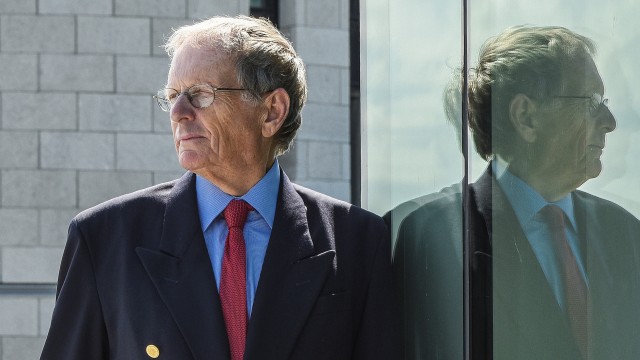Patron profiles
August 31st, 2017
Charles Parent

CATCHING THE HISTORY BUG AT A VERY YOUNG AGE
Charles Parent, an investment advisor and Vice-President with National Bank Financial, has been associated with Pointe-à-Callière for nearly 20 years. Today he is active with the Museum Foundation, after sitting on the Museum’s Board of Trustees for a decade. Normally poised and reserved, he becomes animated when talk turns to history. Join us for a conversation with someone with a passion for the past.
Why did you decide to start working with Pointe-à-Callière?
I’m a history and archaeology buff. The Museum plays an essential role in teaching people about history – not only Montréal’s history but also that of the whole world, as it did with the exhibitions on the Greeks and on the Aztecs. We are citizens of the world who live in a global village, and the Museum recognizes that fact whenever it hosts an exhibition on one of the major civilizations, whether it’s from Peru or the steppes, for instance.
Where did you get your interest in history?
I grew up in politics and so it was only natural for me to be interested in history. My grandfather, Simon-Napoléon Parent, was a Quebec Premier; he was close to Wilfrid Laurier. My father was a Member of Parliament. After he died, my mother married a senator, Louis Gélinas. I recently dined with the grandson of Louis-Alexandre Taschereau [who succeeded my grandfather as Premier]!
Travel also gave me a taste for history. I was very young when I began travelling. My father sent me to Europe at age 15 with some Americans to reward me for my good grades. Europe certainly sparks curiosity! That trip also made me appreciate Quebec. At 17, I went back to France, mostly the western part of the country, where our ancestors were from. In my early 20s, I visited Spain. The next year, in 1965, I headed off on a world tour.
You’re a history buff, but you work in finance. Is there a connection?
Finance is part of the world of politics, which builds on what one did previously. It’s all part of the same thing. In the financial world, we’re interested in everything that makes people tick!
I studied Canadian and European history at university. After that, I switched to nance and went on to become a stockbroker with Lévesque, Beaubien, which later became National Bank Financial.
I’ve always been keen on history. I’ve also been a collector for years. I’ve amassed a French Revolution collection and another on Canadian history. I’ve been able to donate my collection of items relating toCanadian history, mostly books, to Pointe-à-Callière. I also have a collection of books on French painters and another of etchings by Jacques Villon.
Why is Pointe-à-Callière so important?
The site itself is remarkable – the river, the fortifications, the rst Catholic cemetery — and then there are the temporary exhibitions. The Museum’s attendance gures are proof that its mission meets a real need.
People complain that school curricula don’t place enough emphasis on history, that they don’t talk about it enough, because people don’t know their history. The Museum lls that gap and does so in a way that’s appealing to kids.
The Museum is important for tourists, too, and for people who have come here from elsewhere. I was delighted the other day to see some Mexicans at the Museum, because one of our missions is to integrate people who have immigrated to Quebec from around the globe.
Before producing the exhibition on the Greeks, the Museum had ones on Southern Italy and the Etruscans, generating interest in the Italian community. The Dead Sea Scrolls exhibition had a similar result. We owe it all to our Executive Director, Francine Lelièvre, for creating a Museum that adapts to Montréal’s reality as a city of trade, transition and innovation.
- An article from the Cité Magazine – Fall 2015








